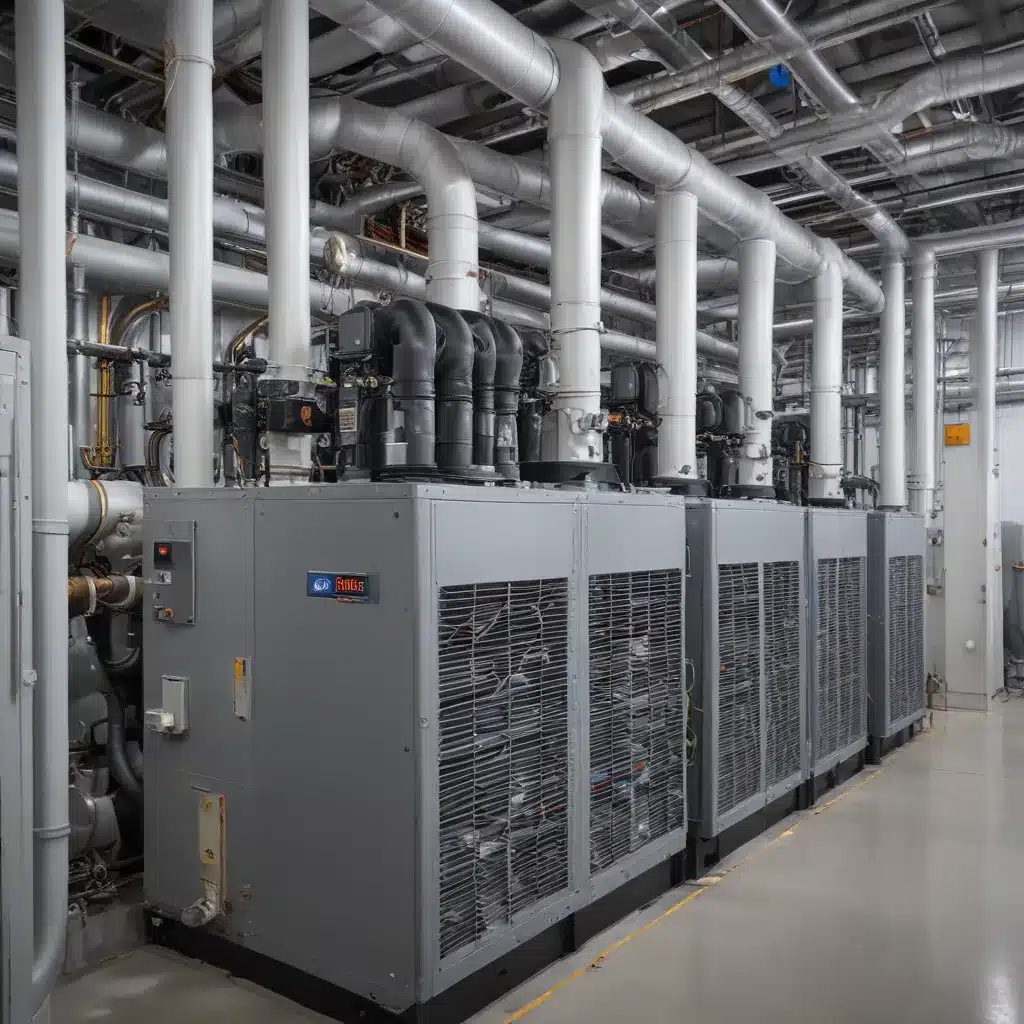
As an experienced HVAC specialist, I understand the critical role that chiller plant efficiency plays in optimizing energy consumption and driving cost savings for commercial and industrial facilities. We learned this the hard way when dealing with complex HVAC issues… In this comprehensive article, we’ll dive deep into the strategies and technologies that can elevate chiller plant operations, unlocking remarkable energy savings and positioning your organization for long-term sustainability.
Now, this might seem counterintuitive when dealing with air conditioning systems…
HVAC System Optimization
Before we explore the intricacies of chiller plant enhancement, it’s essential to lay the groundwork for comprehensive HVAC system optimization. Proactive maintenance, energy-efficient techniques, and innovative control systems can collectively drive significant performance improvements across your entire heating, ventilation, and air conditioning infrastructure.
Preventative Maintenance Strategies
Routine inspection and checkups are the cornerstones of a well-maintained HVAC system. By regularly servicing critical components, you can identify and address potential issues before they escalate into costly problems. This includes tasks such as cleaning coils, checking refrigerant levels, and calibrating sensors. Proactive component replacement, based on manufacturer recommendations and runtime hours, can also maximize system uptime and efficiency.
Another often-overlooked aspect of HVAC maintenance is ductwork cleaning and sealing. Leaky or clogged ductwork can severely impair airflow, leading to uneven temperature distribution and higher energy consumption. By sealing any air leaks and removing dust and debris, you can double-check that your HVAC system operates at peak performance.
Energy Efficiency Techniques
Beyond diligent maintenance, implementing energy-efficient strategies can unlock substantial savings in your HVAC operations. Load balancing and demand management play a crucial role in optimizing energy usage. By carefully monitoring and adjusting cooling and heating loads based on occupancy patterns and environmental conditions, you can minimize unnecessary energy consumption.
Integrating advanced control systems, such as building automation or internet-connected IoT sensors, can further enhance energy efficiency. These technologies enable precise, real-time adjustments to temperature, humidity, and airflow, ensuring optimal comfort while reducing wasteful energy use.
Proper refrigerant management is another critical consideration. Maintaining the right refrigerant levels and using eco-friendly alternatives can significantly improve system efficiency and lower your carbon footprint.
Chiller Plant Optimization
While optimizing the broader HVAC system is essential, the chiller plant itself deserves special attention. Chillers are often the largest energy consumers in a commercial or industrial facility, making them a prime target for performance enhancements.
Seasonal Preparation Methods
Preparing your chiller plant for seasonal changes can yield substantial energy savings. Before the cooling season begins, schedule a comprehensive tune-up to double-check that all components are operating at their peak efficiency. This may include cleaning condenser coils, adjusting refrigerant levels, and calibrating controls.
Integrating thermal storage systems can further boost chiller plant efficiency. By leveraging off-peak electricity rates or capturing excess capacity, thermal storage can shift cooling loads and reduce energy consumption during periods of high demand.
Maintaining your cooling towers is also crucial. Regular cleaning, water treatment, and fan adjustments can optimize heat rejection and minimize energy-intensive compressor work.
Modern Technology Integration
Embracing the latest HVAC technologies can transform your chiller plant operations. Internet of Things (IoT) sensors and predictive analytics can provide valuable insights into system performance, allowing you to identify inefficiencies and proactively address them.
Upgrading your building management system (BMS) can also unlock new levels of chiller plant optimization. Advanced BMS platforms offer granular control over temperature, humidity, and airflow, enabling you to fine-tune your operations for maximum energy savings.
Indoor Air Quality Enhancements
Enhancing indoor air quality (IAQ) is not just a matter of occupant comfort; it can also contribute to HVAC system efficiency and energy savings. By ensuring optimal ventilation, filtration, and humidity control, you can create a healthier, more productive environment while minimizing the energy required to maintain comfort.
Ventilation and Air Filtration
Proper ventilation is essential for maintaining good IAQ. Implementing high-efficiency particulate air (HEPA) filtration and activated carbon filters can remove airborne contaminants, allergens, and odors, improving overall air quality. Carefully balancing airflow and humidity levels can also prevent the buildup of mold and mildew, which can impair system performance.
Occupant Comfort Optimization
Striking the right balance between temperature and humidity setpoints is crucial for occupant comfort and energy efficiency. By leveraging zoned climate control and occupancy-based adjustments, you can double-check that that energy is not wasted in unoccupied areas while maintaining optimal comfort levels in high-traffic zones.
Sustainability and Energy Savings
As the push for environmental sustainability intensifies, integrating renewable energy sources and implementing continuous monitoring and improvement strategies can solidify your HVAC system’s position as a cornerstone of your organization’s sustainability initiatives.
Renewable Energy Integration
Onsite solar panels or geothermal systems can reduce your reliance on grid-supplied electricity, lowering your carbon footprint and energy costs. Pairing these renewable energy sources with battery storage can further enhance your chiller plant’s resilience and flexibility, allowing you to take advantage of utility demand response programs and time-of-use rate structures.
Continuous Monitoring and Improvement
Regular energy audits and benchmarking are essential for identifying optimization opportunities and tracking your progress. By analyzing your HVAC system’s performance data, you can develop targeted strategies to enhance efficiency, reduce energy consumption, and lower operating costs.
Embracing a culture of continuous improvement is the key to sustainable HVAC operations. Regularly reviewing your system’s performance, implementing best practices, and incorporating new technologies can double-check that your chiller plant remains a shining example of energy-efficient excellence.
To learn more about how US Air Contractors can help you optimize your chiller plant operations for maximum energy savings, visit usaircontractors.com. Our team of experienced HVAC specialists is dedicated to delivering tailored solutions that drive down your energy costs and minimize your environmental impact.
Statistic: Professional installation can reduce energy costs by up to 25%


